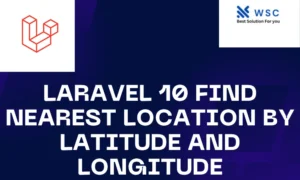In the world of web development, making guzzle HTTP requests is a common task. Laravel, being a popular PHP framework, provides various tools to simplify this process. One such tool is Guzzle, a PHP HTTP client that makes it easy to send HTTP requests and integrate with web services.
In this tutorial, we’ll explore how to use Guzzle in Laravel 11 to make HTTP requests to external APIs or websites. We’ll walk through a step-by-step example, including setting up Laravel, installing Guzzle, and making a basic HTTP request.
Step 1: Setting Up Laravel 11
Before we begin, make sure you have Laravel 11 installed on your system. You can install Laravel globally using Composer by running the following command in your terminal:
composer global require laravel/installer
Once Laravel is installed, create a new Laravel project by running:
laravel new guzzle-example
Navigate to your project directory:
cd guzzle-example
Step 2: Installing Guzzle
Guzzle is not included by default in Laravel projects, so you need to install it separately via Composer. Run the following command in your terminal:
composer require guzzlehttp/guzzle
This command will download and install Guzzle and its dependencies into your Laravel project.
Step 3: Creating a Route and Controller
Next, let’s create a route and controller to handle our Guzzle HTTP request. Open the routes/web.php file and define a new route:
use App\Http\Controllers\GuzzleController;
Route::get('/guzzle-example', [GuzzleController::class, 'makeRequest']);
Now, let’s create the controller. Run the following command to generate a new controller:
php artisan make:controller GuzzleController
This command will create a new controller named GuzzleController.php in the app/Http/Controllers directory.
Step 4: Making the HTTP Request
Open the GuzzleController.php file that was just created and add the following method:
<?php
namespace App\Http\Controllers;
use Illuminate\Http\Request;
use GuzzleHttp\Client;
class GuzzleController extends Controller
{
public function makeRequest()
{
$client = new Client();
$response = $client->request('GET', 'https://jsonplaceholder.typicode.com/posts/1');
$data = json_decode($response->getBody(), true);
return response()->json($data);
}
}
In this method, we create a new instance of Guzzle’s Client class, then use it to make a GET request to a sample JSON API endpoint provided by JSONPlaceholder. We retrieve the response body and decode it from JSON to an associative array. Finally, we return the data as a JSON response.
Step 5: Testing the Route
Now that we’ve set up our route and controller, let’s test our Guzzle HTTP request. Start the Laravel development server by running:
php artisan serve
Visit http://localhost:8000/guzzle-example in your web browser. You should see the JSON response containing data from the JSONPlaceholder API.
Conclusion
In this tutorial, we’ve learned how to use Guzzle in Laravel 11 to make HTTP requests. We set up a basic Laravel project, installed Guzzle via Composer, created a route and controller, and made a simple HTTP request to an external API. Guzzle is a powerful tool that can handle various HTTP-related tasks in Laravel applications, making it easier to integrate with external services and APIs.
- Check our tools small Tools
- Check our tools website Word count




